CarEdge saved me over 4,500 dollars on a brand new Honda Pilot. I can't say thank you enough.
Price intelligence
Find a wide range of vehicle listings with market insights on new and used listings near you.


Help us personalize your CarEdge experience — it only takes a second.
Your answers help us personalize your CarEdge journey — we’ll follow up with tips and next steps that match your buying timeline.

We hear it all the time: electric cars save you money. Electricity is cheaper than gas, EVs require less maintenance, and incentives abound. However, there’s no hiding the fact that electric vehicles are expensive, especially the models with the best range, performance and charge rates. To shed light on the reality of electric vehicle savings, we dug deep into the data. How long does it take to break even when buying an EV? We were surprised with what we found.

The X4 is one of the most direct competitors to the 2022 Tesla Model Y, the best selling electric vehicle in America. Although Tesla models no longer qualify for the federal EV tax credit, the cost of the BMW X4 and high fuel consumption make this an interesting comparison.
| Model | MSRP | Price Difference | Incentives | Fuel Economy | Range | Time to Refuel | Cost to Refuel ($5.00/gal or $0.14 per kWh) | Annual Fuel Cost (15,000 miles) | Average Annual Maintenance Cost | Time to Break Even |
|---|---|---|---|---|---|---|---|---|---|---|
| BMW X4 xDrive30i | $51,800 | -- | 24 MPG | 413 miles | 5 min | $86.00 | $3123 | $228 | ||
| Tesla Model Y Long Range | $62,990 | +$11,190 | State and local only | 3.8 mi/kWh (125 MPGe) | 330 miles | 20 to 30 min | $10.50 | $477 | $77 | 4 years |
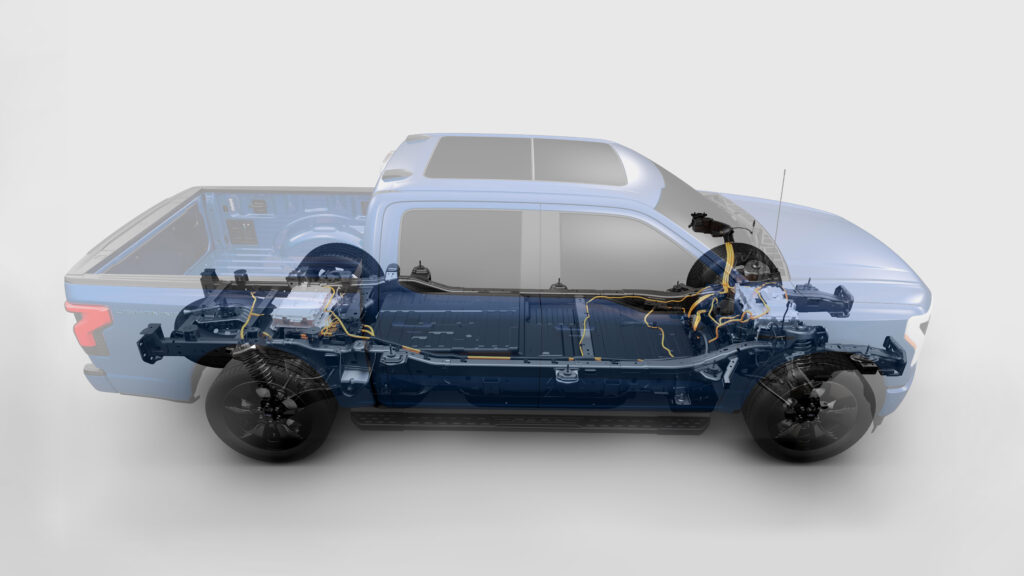
Pickup trucks get the worst fuel economy. It’s just a matter of physics; the shape of a truck is not aerodynamic, and they’re often heavy. The F-150 Lightning weighs 35% more than the gas-powered F-150. So you would think that the time to break even would be shorter when buying an electric truck over the combustion equivalent.
This side-by-side comparison highlights the importance of price parity for EVs. When EVs are similarly priced to ICE vehicles, the cost of ownership savings are crystal clear. But what about when the electric version costs over $25,000 more out the door? Have a look for yourself.
| Model | MSRP | Price Difference | Incentives | Fuel Economy | Range | Time to Refuel | Cost to Refuel ($5.00/gal or $0.14 per kWh) | Annual Fuel Cost (15,000 miles) | Average Annual Maintenance Cost | Time to Break Even |
|---|---|---|---|---|---|---|---|---|---|---|
| Ford F-150 Platinum 4WD 3.5 | $62,070 | -- | 20 MPG | 520 miles | 5 min | $130.00 | $3750 | $228 | ||
| Ford F-150 Lightning Platinum | $90,874 | +$28,804 | Fed, state and local | 2.1 mi/kWh (70 MPGe) | 320 miles | 45 min | $18.34 | $860 | $77 | 9.5 yrs (7 yrs with tax credit) |
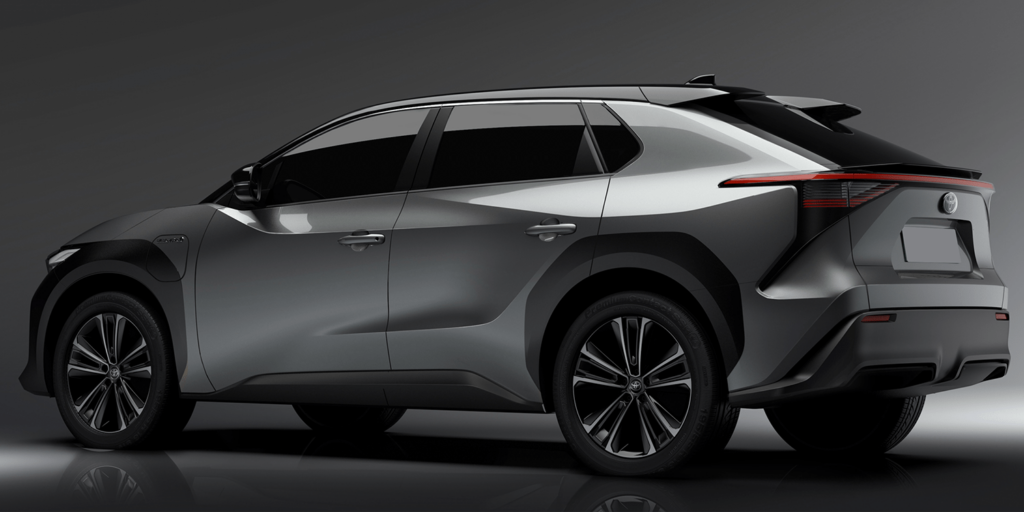
Toyota sells nearly half a million RAV4s every year. Will things change now that Toyota has launched its first fully-electric vehicle? The all-new bZ4X lacks the range and charging speed to compete with the best in 2022’s electric segment, but how does it stack up to the popular RAV4 hybrid? How long would it take to break even when paying a premium for the electric bZ4X?
| Model | MSRP | Price Difference | Incentives | Fuel Economy | Range | Time to Refuel | Cost to Refuel ($5.00/gal or $0.14 per kWh) | Annual Fuel Cost (15,000 miles) | Average Annual Maintenance Cost | Time to Break Even |
|---|---|---|---|---|---|---|---|---|---|---|
| Toyota RAV4 XLE Hybrid | $30,545 | -- | 40 MPG | 580 miles | 5 min | $72.50 | $1,875 | $228 | ||
| Toyota bZ4X XLE FWD | $42,000 | +$11,455 | Fed, state and local | 3.5 mi/kWh (119 MPGe) | 252 miles | 1 hour | $10.19 | $606 | $77 | 8 years (2.7 yrs with tax credit) |
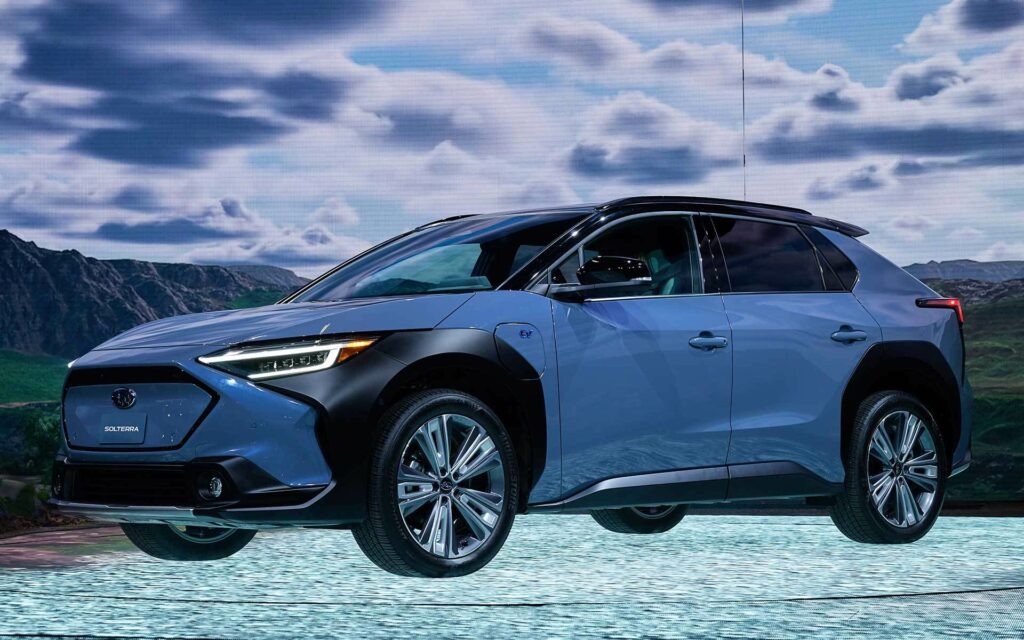
Subaru’s first EV is built on the same electric platform as the new Toyota bZ4X. Subaru is known for being Earth-friendly, but is the new Solterra EV friendly to your wallet? With range and charging figures more akin to 2015’s standards than today’s best EVs, the Subaru Solterra is off-road capable, but a tough sell for those who truly venture off the beaten path.
| Model | MSRP | Price Difference | Incentives | Fuel Economy | Range | Time to Refuel | Cost to Refuel ($5.00/gal or $0.14 per kWh) | Annual Fuel Cost (15,000 miles) | Annual Maintenance Cost | Time to Break Even |
|---|---|---|---|---|---|---|---|---|---|---|
| Subaru Forester base | $25,395 | -- | 29 MPG | 481 miles | 5 min | $83.00 | $2,588 | $228 | ||
| Subaru Solterra Premium | $46,220 | +$20,825 | Fed, state and local | 3.1 mi/kWh (104 MPGe) | 228 miles | 1 hour | $9.97 | $677 | $77 | 10 years (6.5 yrs with tax credit) |
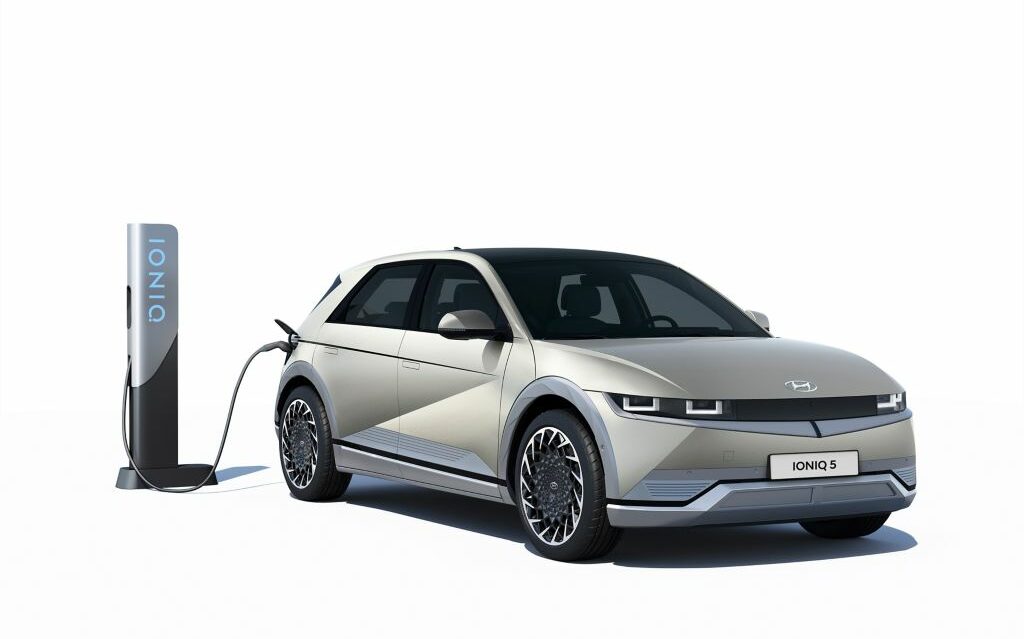
The Hyundai IONIQ 5 won big at the 2022 World Car Awards, but is it a winner for your wallet? It all depends on how much you drive, and how long you plan to keep the vehicle. The Hyundai Santa Fe just received a total makeover, and its price remains much lower than the IONIQ 5’s. Still, EVs are super efficient and electricity is cheap. Just how long would it take to break even when buying an IONIQ 5 EV instead of the more affordable Santa Fe crossover?
Disclaimer: I own a Hyundai IONIQ 5 Limited AWD, and it’s awesome.
| Model | MSRP | Price Difference | Incentives | Fuel Economy | Range | Time to Refuel | Cost to Refuel ($5.00/gal or $0.14 per kWh) | Annual Fuel Cost (15,000 miles) | Average Annual Maintenance Cost | Time to Break Even |
|---|---|---|---|---|---|---|---|---|---|---|
| Hyundai Santa Fe SEL | $27,875 | -- | 26 MPG | 489 miles | 5 min | $94.00 | $2,883 | $228 | ||
| Hyundai IONIQ 5 SEL RWD | $45,900 | +$18,005 | Fed, state and local | 3.4 mi/kWh (114 MPGe) | 303 miles | 20 to 30 min | $10.15 | $502 | $77 | 7 years (4.2 yrs with tax credit) |
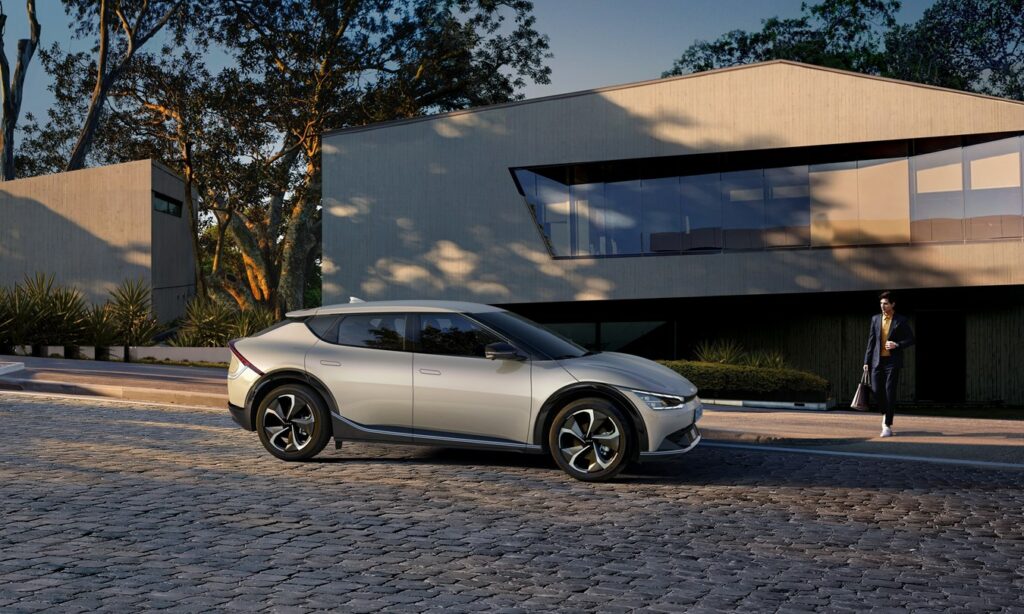
In many states and localities, thousands of dollars of additional incentives are available. Colorado, Connecticut, Delaware, Maryland and California are just some of the states with very generous EV incentives. State and local incentives can reduce the time to break even considerably. For example, in Delaware, buyers of the Hyundai IONIQ 5 will break even versus the Santa Fe in just 3.5 years with the federal EV tax credit and state rebates factored in.
Conversely, for car buyers who can’t take advantage of the federal EV tax credit or any state incentives, it will take many more years to reap the full savings of switching to an electric vehicle. In the case of the new Ford F-150 Lightning, it could take up to 8 years to break even without any incentives, assuming 15,000 miles per year of driving.
Check this out >>> The North Carolina Clean Energy Technology Center’s DSIRE database is the BEST one-stop resource for all EV incentives. Plus, you’ll see what solar power incentives are available in your area too.
The difference between driving 10,000 miles per year and 20,000 miles per year is massive when it comes to realizing the savings of driving an EV. The average American driver travels about 14,000 miles per year in their vehicle. Simply put, long-distance commuters, frequent travelers and fleet operators will see the greatest cost savings of going electric.
With the 2023 Ford F-150 Lightning, a driver who travels 15,000 miles per year and can take advantage of the full $7,500 federal EV tax credit should expect to break even versus a combustion F-150 in 7 years. However, if they drive 25,000 miles per year, the break even period narrows to just 4 years. After that, they will be saving roughly $4,000 every year in fuel and maintenance costs. Clearly, EVs make more sense as a long-term purchase.
The maintenance figures included in this cost comparison is sourced from We Predict, a Michigan-based data analysis company. They dug deep into automotive maintenance data and found that during the first three years of vehicle ownership, the average annual maintenance for an electric vehicle is just $77. And based on personal experience, that’s likely for new tires (EVs are MUCH heavier).
During the same period, combustion vehicles average $228 in annual maintenance, with most of the costs in the first few years going towards oil changes and the like.
We may be underestimating the maintenance savings associated with going electric when comparing luxury brands. For example, BMW is notorious for costly maintenance. Opting for a Tesla Model Y over a BMW will likely result in even greater maintenance savings, and therefore a reduced break-even period.
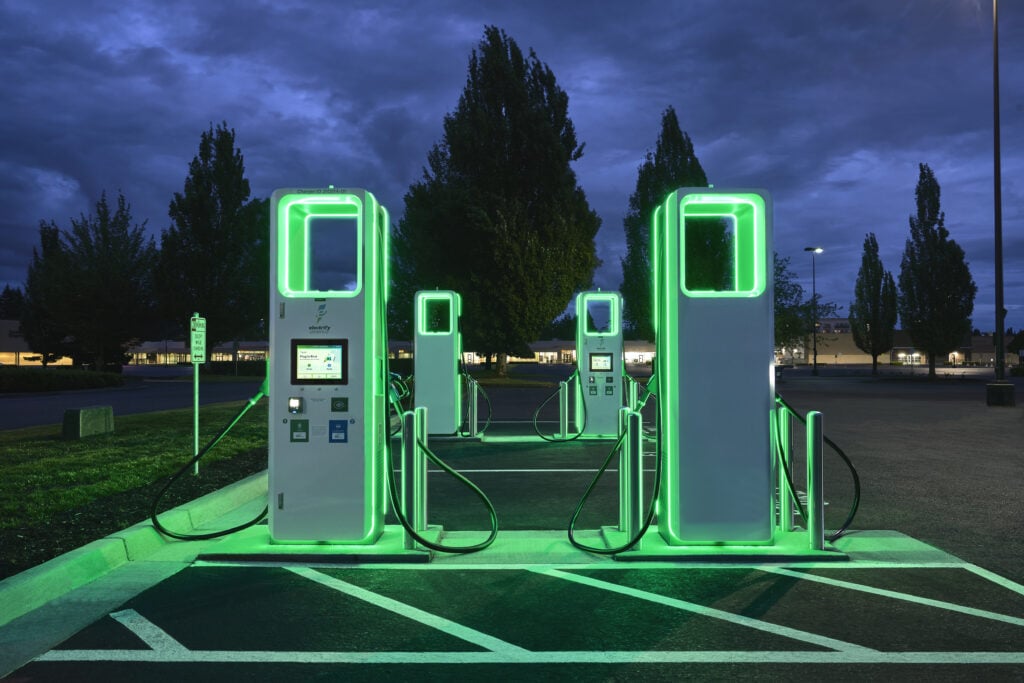
As of early June 2022, the average gas price in the United States is $4.87 per gallon. In California, it’s $6.34. Nevada, Hawaii, Washington, Oregon and Illinois all have gas prices much higher than the national average. In these states, EV drivers will see even greater fuel savings.
Let’s take a closer look at an example of someone purchasing a Hyundai IONIQ 5 in California. We’ll assume that the consumer qualifies for the full $7,500 EV tax credit and the $2,500 state rebate for a zero-emissions vehicle. They drive 15,000 miles per year. At gas prices of $6.34 per gallon, the break even point for the IONIQ 5 versus the Hyundai Santa Fe arrives in just 2.5 years, versus 4 years for the rest of the nation. That figure includes the 59% higher residential electricity rates in California.
What can we learn from this EV cost of ownership comparison? The specifics of your situation matter.
These are the most important questions to ask when deciding whether or not it makes sense to buy an EV in 2022. Have questions? Let us know in the comments, or better yet join the CarEdge family at caredge.kinsta.cloud/community. You can also reach me at [email protected]. We’d love to hear from you.
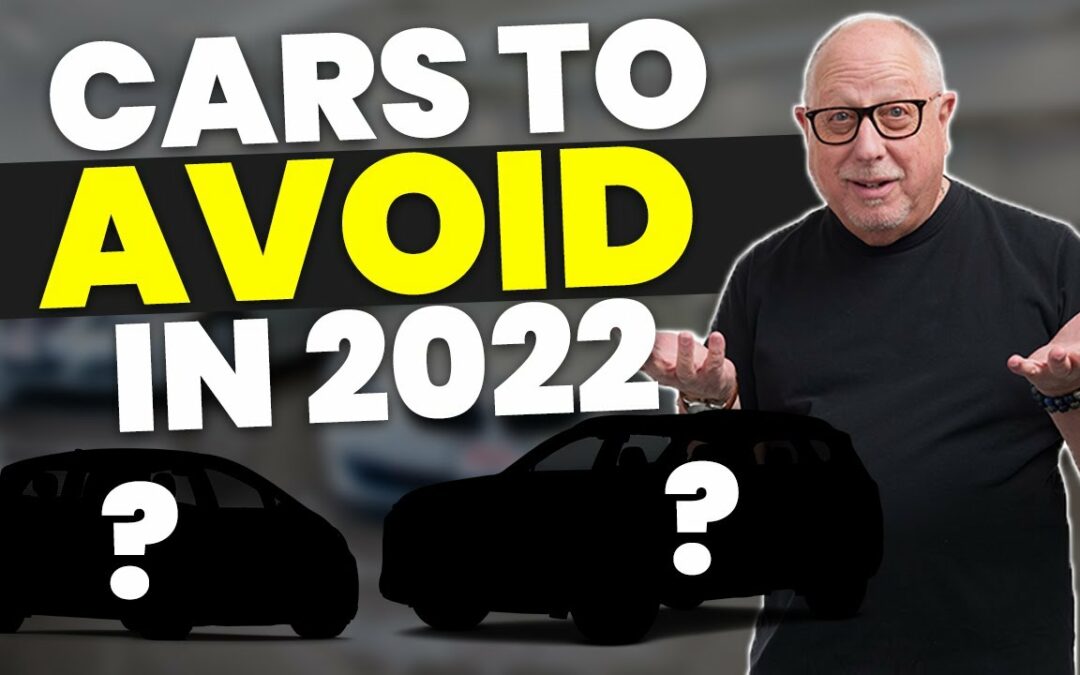

At a time when the average transaction price for a new vehicle is inching closer to $50,000, getting your money’s worth matters more than ever. Electric vehicles are popular, but they’re expensive. Most importantly, not all EVs are equal in terms of range, charging speed, and overall value for the money. These are the worst deals for a new electric car in 2022, plus some better alternatives on the market today.
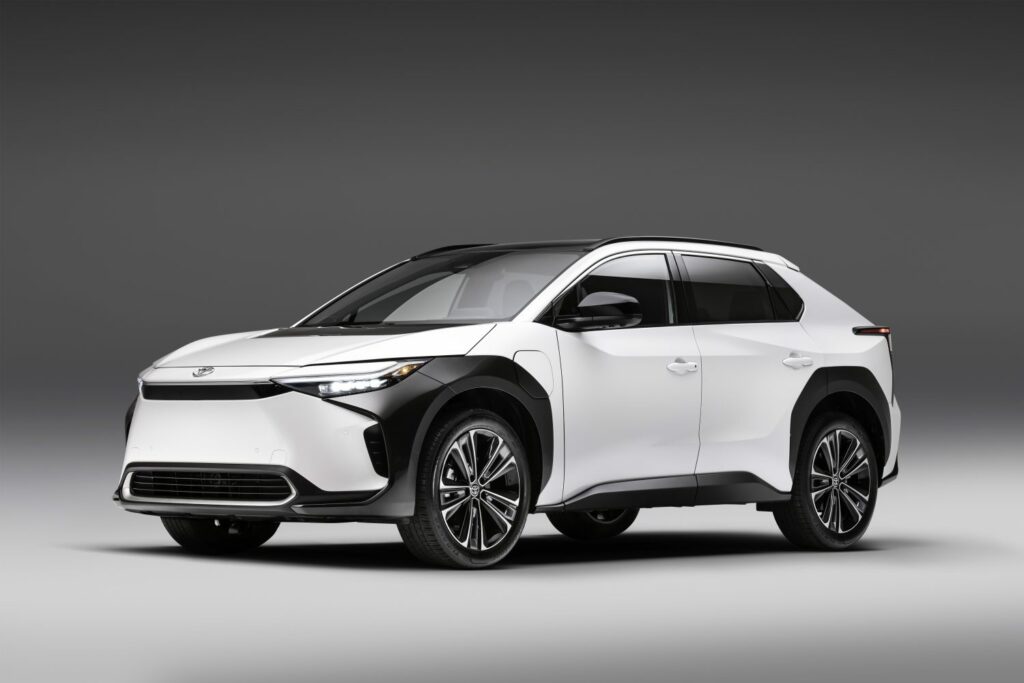
Long the authority when it comes to hybrid powertrains, the world waited with great anticipation for the first all-electric Toyota. The automaker that brought us the legendary Prius collaborated with Subaru to engineer the 2023 Toyota bZ4X, and its sibling the Subaru Solterra (more on that below). The result is puzzling. At a time when Hyundai, General Motors and of course Tesla are bringing cars to market with fast-charging times under 30 minutes, Toyota jumps into the game with an electric crossover that takes a whole hour to charge under optimal conditions.
Okay, so it charges slowly. What about the Toyota bZ4X’s range? The front-wheel drive bZ4X is rated for 242 miles with the Limited trim, and 252 miles on the XLE. Upgrade to dual-motor all-wheel drive, and range suffers. The AWD Toyota bZ4X is EPA-rated for 222 miles on the Limited, and 228 miles with lower trims.
Pricing starts at $43,215 before incentives, and tops out at $49,995 for the bZ4X Limited all-wheel drive.
Here’s a summary of what the 2023 Toyota bZ4X offers:
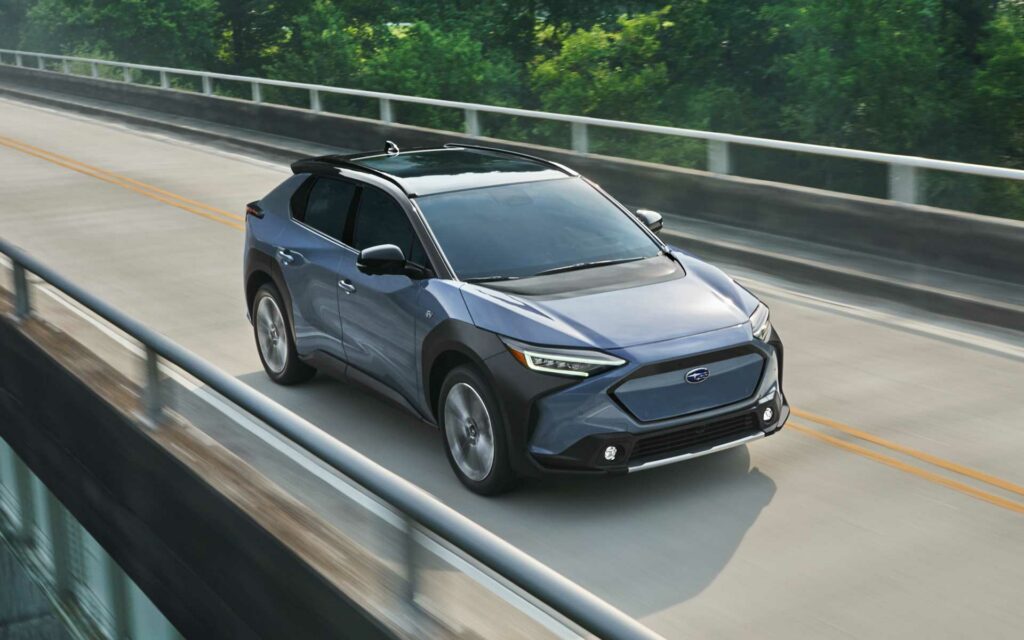
I get why Subaru drivers love their cars. I’m a fan of the outdoorsy, all-terrain capable vehicles at an attainable price. Now that Subaru’s first electric vehicle has arrived, I’m heartbroken. It’s not a compelling EV, especially compared to the competition as a 2023 model.
Toyota’s new electric platform paired with all-wheel drive and the Subaru badge will set you back at least $46,220, and the Solterra Touring’s MSRP is a lofty $53,220. Range isn’t anything to brag about. In fact, it just might cause range anxiety from day one.
2023 Subaru Solterra
Perhaps if you don’t travel too far off the beaten path, the 2023 Subaru Solterra could be right for you. But that defeats the purpose of having a Subaru, doesn’t it?
Here’s our full review of the Subaru Solterra.
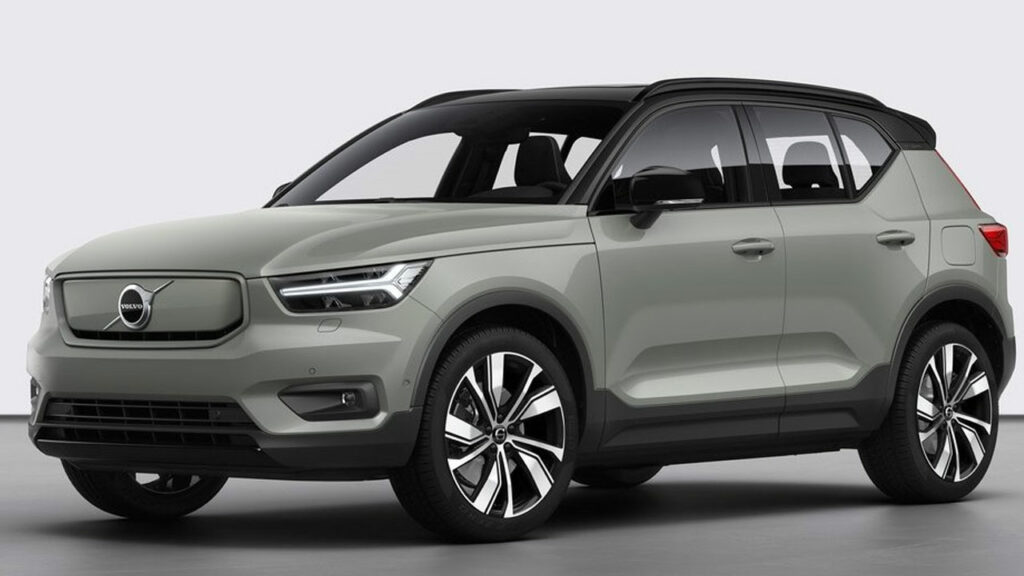
When it comes down to the specs, looks and driving experience, the 2022 Volvo XC40 Recharge is not a bad car. Many owners love its zippy performance and Scandinavian looks. What’s not to like? The price paired with the range. The XC40 Recharge is not an affordable EV. With a starting price of $51,700 and most trim options ending up around $60,000, this Volvo’s price approaches that of its competitor: the Tesla Model Y.
Here’s what to expect from the 2022 Volvo XC40 Recharge:

The I-PACE was one of the first electric vehicles to earn mainstream popularity in North America. When it arrived in 2018, range and charging capabilities were on-par with the best. What’s the problem then? Jaguar has not invested in powertrain upgrades for the I-PACE, and it has consequently fallen out of favor among EV buyers.
The 2022 Jaguar I-PACE starts at an MSRP of $71,200, plus destination and fees. What do you get for such a lofty price, other than the Jaguar brand?
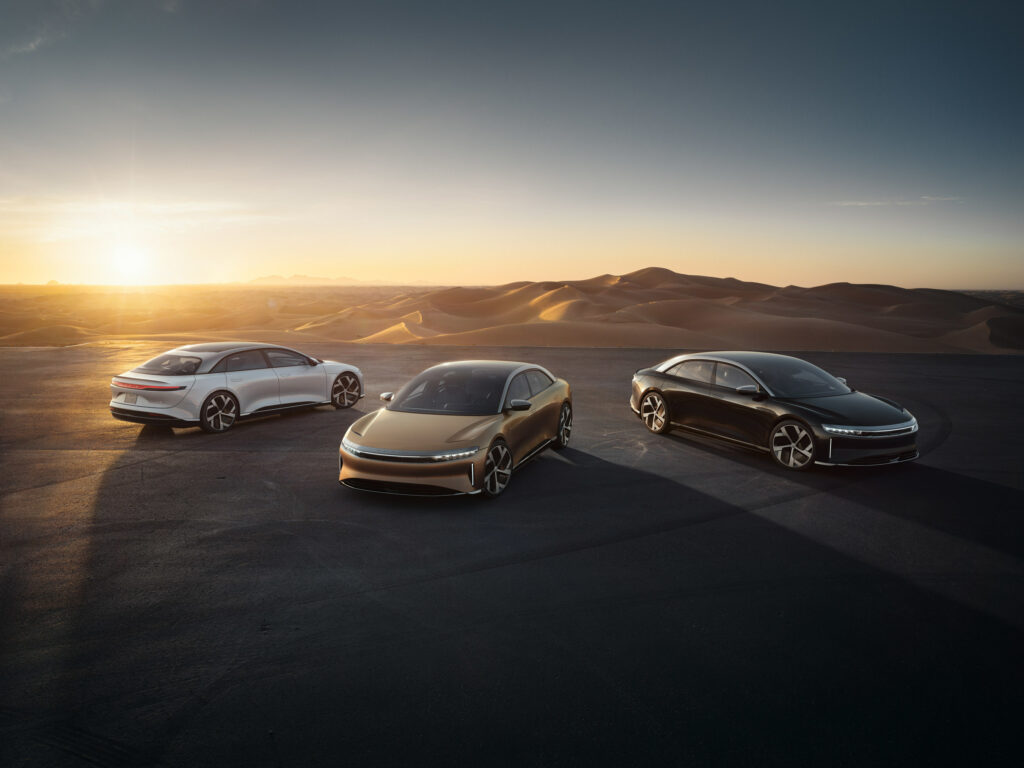
Seasoned electric vehicle enthusiasts may be surprised to see the Lucid Air on this list of overpriced EVs, but hear me out. Although the newly-released 2022 Lucid Air starts at $78,900, you’d be hard pressed to find one in 2022 for under $150,000. Lucid’s design is sharp and sleek, and it’s certainly worthy of a luxury price tag. But if you want all the bells and whistles seen in Lucid’s commercials, brace yourself for sticker shock. The fully-loaded Lucid Air Dream Edition costs $169,900.
Within the electric luxury sedan segment, the Lucid Air makes the Tesla Model S look like a bargain. Although the base ‘Air Pure’ starts at $77,400, the Air Pure won’t be available until late 2022 at the earliest. If you’re looking for luxury, a glass roof, and insane performance, the Tesla Model S offers that and more at $99,990. Even with the federal EV tax credit factored in, the Lucid Air Dream Edition costs over $50,000 more, and stepping down to the Lucid Air Grand Touring at $139,900 will still cost 30% more than the Tesla.
At least you get some impressive specs with the Lucid Air, but the competition offers more value and a longer track record of build quality and electric powertrain performance. Still, the Lucid Air is the range king of all electric cars for now.
Here’s our full review of the Lucid Air.
At CarEdge, we’re all about solutions. If you’re on the market for one of these overpriced electric cars, here are some more compelling EVs to take for a test drive.
2022 Hyundai IONIQ 5
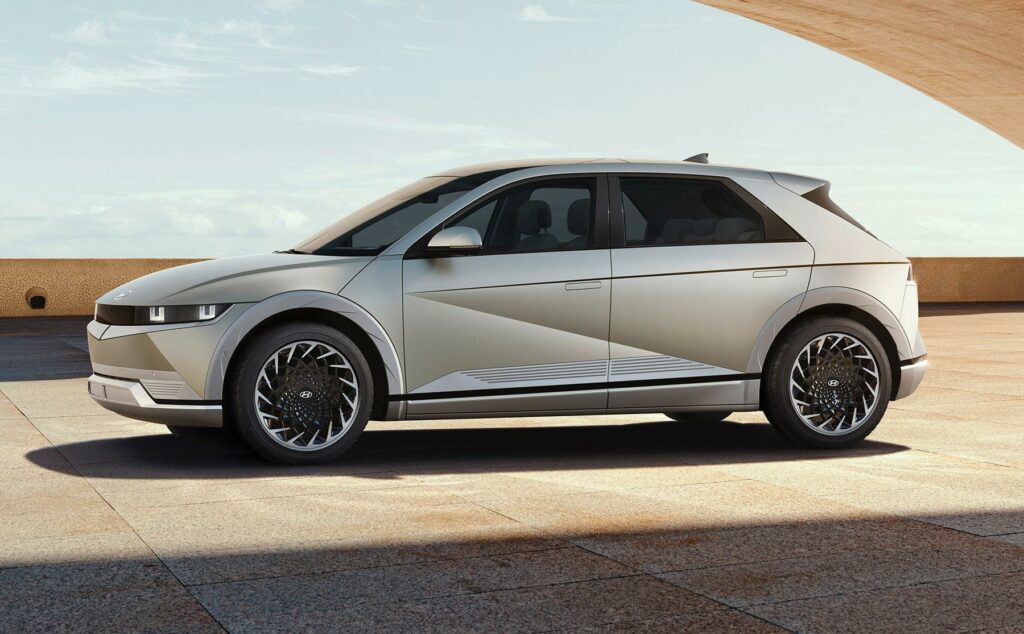
Why? For less than $50,000, this retro-styled EV sports a roomy cabin, decent range, and ultra-fast charging powered by the new e-GMP platform’s 800-Volt engineering.
Price: $44,875 – $56,200
Range: 256 to 303 miles
Charge time: Adds 180 – 200 miles of range in 18 minutes (230 kW charge speeds)
Availability: Available now. Check CarEdge Car Dealer Reviews to find the best dealers to work with.
Does it qualify for the federal EV tax credit? Yes!
Learn more with our in-depth review of the IONIQ 5.
2022 Kia EV6

Why? If you love the Hyundai IONIQ 5’s specs and pricing, but aren’t a fan of the looks, chances are the Kia EV6 will be right up your alley. This sporty electric crossover is also powered by the new e-GMP platform’s 800-Volt architecture for the fastest charging available.
Price: $40,900 – $55,900
Range: 274 to 310 miles
Charge time: Adds 190 – 210 miles of range in 18 minutes (230 kW charge speeds)
Availability: Available now. Check CarEdge Car Dealer Reviews to find the best dealers to work with.
Does it qualify for the federal EV tax credit? Yes!
Learn more with our in-depth review of the EV6.
2022 Ford Mustang Mach-E
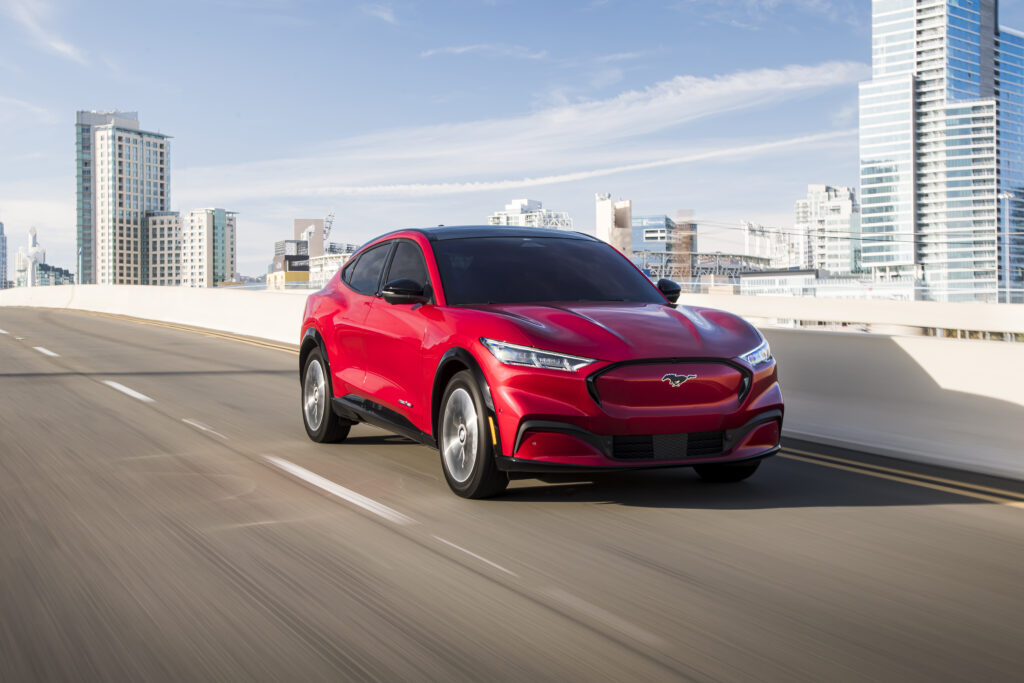
Why? You’d be hard-pressed to find a dissatisfied Mustang Mach-E owner. This EV is on a much more sport-oriented suspension, with a family-friendly modern interior.
Price: $43,895 – $61,995
Range: 224 to 314 miles
Charge time: Charging improvement incoming via over-the-air update, but for now, the Mustang Mach-E adds 59 miles of range in ten minutes, and charging from 10%-80% takes about 45 minutes.
Availability: Available now. Check CarEdge Car Dealer Reviews to find the best dealers to work with.
Does it qualify for the federal EV tax credit? Yes!
Learn more with our in-depth review of the Mustang Mach-E.
2022 Tesla Model Y
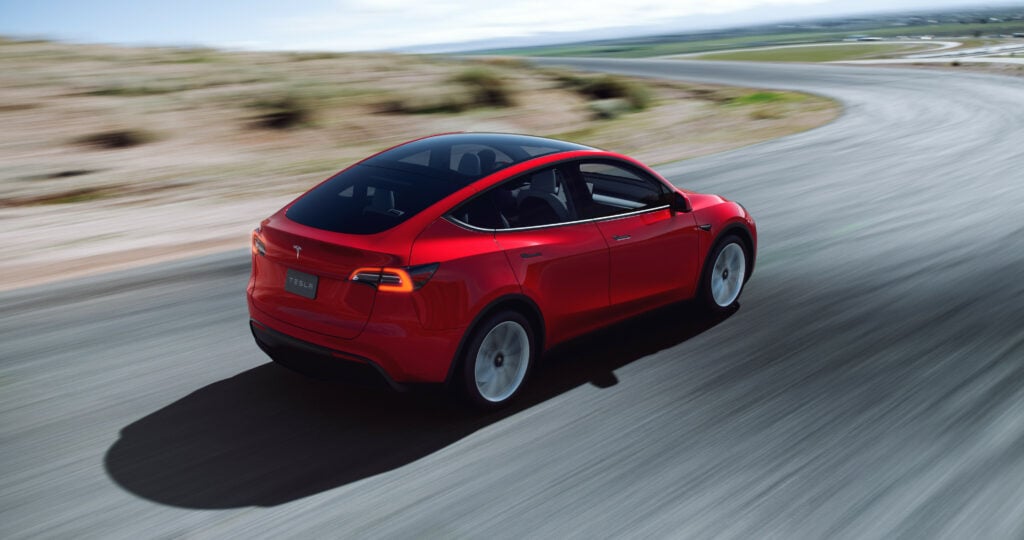
Why? This is still the best electric crossover on the market. Great efficiency, range and charging speeds paired with Tesla’s superior over-the-air update capabilities makes this EV the EV sales leader. If only it still qualified for the federal tax credit!
Price: $62,990 – $82,990
Range: 303 – 330 miles
Charge time: Add 200 miles of range in 15 minutes at over 1,200 Tesla Supercharger locations in North America.
Availability: Available now via Tesla’s direct-to-consumer sales, or pre-owned on CarEdge Car Search.
Does it qualify for the federal EV tax credit? No, not unless the tax credit is revised by congress.
Learn more with our in-depth review of the Model Y.
2022 Volkswagen ID.4
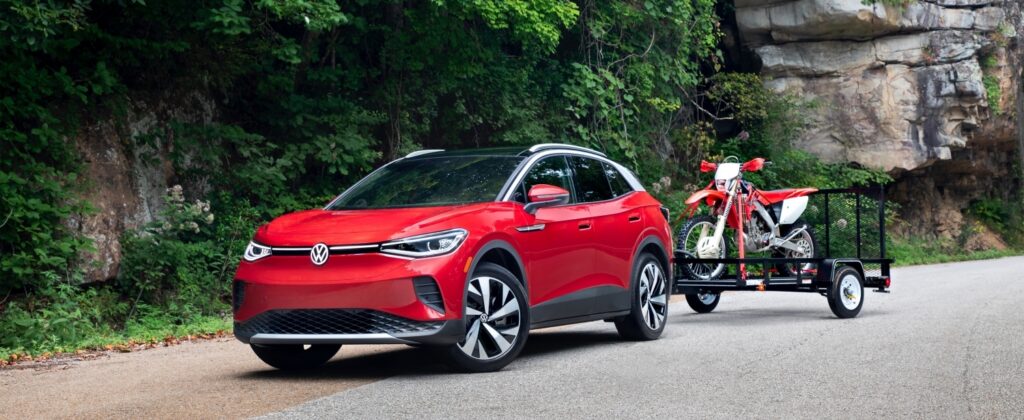
Why? If you can find one at MSRP, the ID.4 is a solid choice for those opting for a more leisurely, less sporty EV. However, it has lost much of its appeal ever since the Hyundai and Kia electric crossovers hit the market with much faster charging.
Price: $41,230 – $52,500
Range: 249 – 260 miles
Charge time: Add up to 190 miles of range in 40 minutes
Availability: Available now. Check CarEdge Car Dealer Reviews to find the best dealers to work with.
Does it qualify for the federal EV tax credit? Yes!
Learn more with our in-depth review of the ID.4.
2022 Tesla Model S
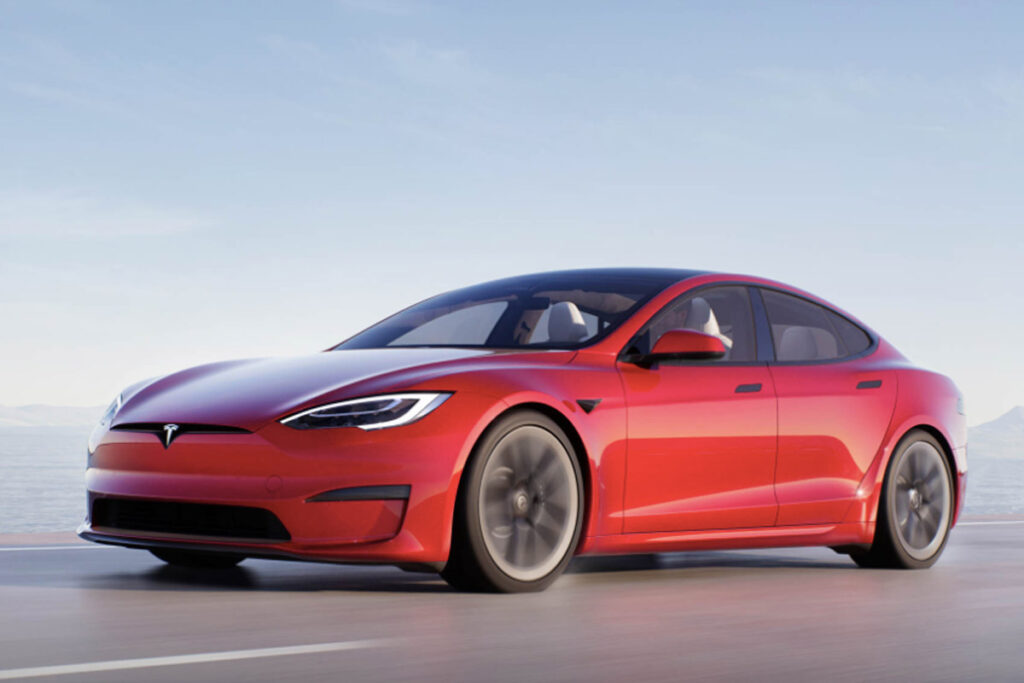
Why? Tesla’s first mass-produced model has matured into the gold standard among luxury EVs. It’s pricey, but sky-high resale value and frequent OTA updates make this Tesla a smart choice for those in the market for something larger than the more popular Model 3.
Price: $99,990 – $156,990
Range: 348 – 405 miles
Charge time: Add up to 200 miles of range in 15 minutes
Availability: Available now via Tesla’s direct-to-consumer sales, or pre-owned on CarEdge Car Search.
Does it qualify for the federal EV tax credit? No, not unless the tax credit is revised by congress.
2022 Mercedes-Benz EQS
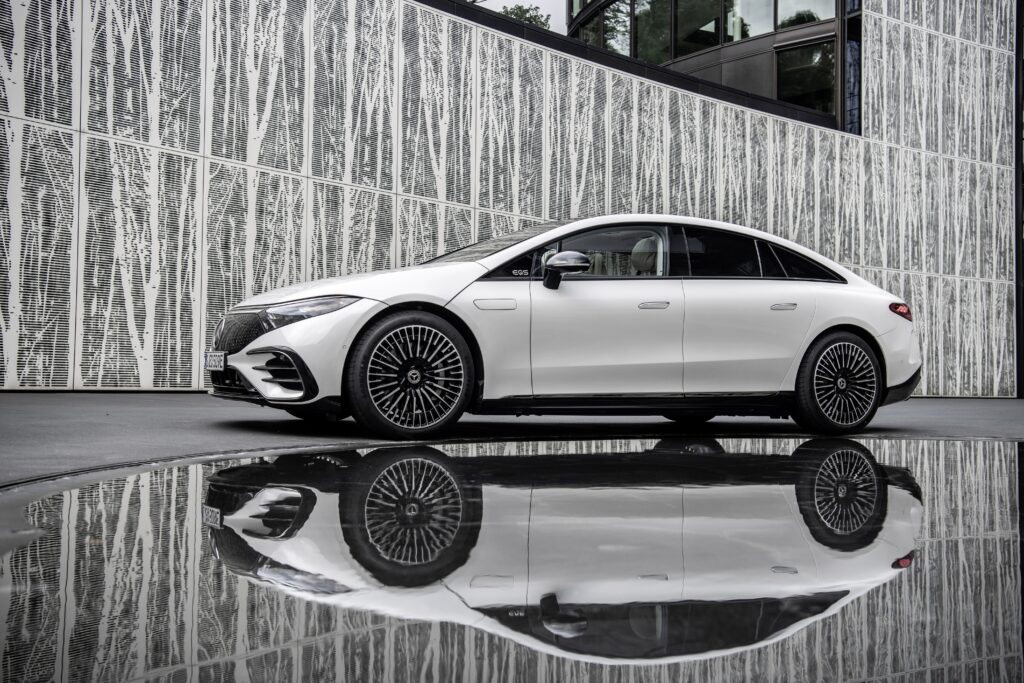
Why? The first dedicated electric vehicle from Mercedes to make it to North America is something to behold. It doesn’t have the Tesla Supercharger network, but the interior is luxury on another level.
Price: $102,310 – $108,510
Range: 350 miles
Charge time: Add up to 200 miles of range in 20 minutes
Availability: Available now. Check CarEdge Car Dealer Reviews to find the best dealers to work with.
Does it qualify for the federal EV tax credit? Yes!
Learn more with our in-depth review of the EQS.
Do you agree with this analysis, or did we miss the mark? Please, let us know in the comments below, or join us at the CarEdge Community to talk cars, deals and more. Our CarEdge auto experts are ready to take the headache out of your car buying experience.


As electric cars continue to enter the mainstream, the tug-of-war between EV startups and legacy giants is intensifying. With federal EV tax credits now expired, how will EV sales trend? Will Tesla hold its lead, or will Ford, General Motors and the rest catch up? Bookmark this page for the latest quarterly and monthly sales and market share updates for electric vehicles in the United States.
Q3 2025 EV sales numbers reflect the rush to get ahead of the federal tax credit expiration on September 30, 2025:
In the third quarter of 2025, battery electric vehicle market share reached 10.5% of all new car sales in the United States. This is down slightly from 8.9% one year prior, and nearly unchanged from 7.2% of the market in Q2 2025.
Here’s how U.S. EV sales totals in Q3 2025 compare to the past three years:
| Automaker | Q1 2022 | Q2 2022 | Q3 2022 | Q4 2022 | Q1 2023 | Q2 2023 | Q3 2023 | Q4 2023 | Q1 2024 | Q2 2024 | Q3 2024 | Q4 2024 | Q1 2025 | Q2 2025 | Q3 2025 |
|---|---|---|---|---|---|---|---|---|---|---|---|---|---|---|---|
| Tesla (estimate) | 129,743 | 130,047 | 114,000 | 131,574 | 161,630 | 175,262 | 156,621 | 161,375 | 140,187 | 164,264 | 166,923 | 154,900 | 128,100 | 143,535 | 179,525 |
| Ford Motor Company | 6,734 | 15,273 | 18,257 | 20,339 | 10,866 | 14,843 | 20,962 | 25,937 | 20,223 | 23,957 | 23,509 | 30,176 | 22,550 | 16,438 | 30,612 |
| General Motors | 457 | 7,217 | 15,156 | 16,150 | 20,670 | 15,652 | 20,057 | 19,469 | 16,169 | 21,930 | 32,095 | 43,982 | 31,887 | 46,280 | 66,501 |
| Honda Motor Co | 0 | 0 | 0 | 0 | 0 | 0 | 0 | 0 | 0 | 1,873 | 15,291 | 18,838 | 14,374 | 12,278 | 22,236 |
| Nissan | 4,371 | 3,251 | 1,276 | 3,308 | 5,214 | 4,215 | 6,074 | 5,113 | 5,284 | 7,128 | 10,066 | 8,546 | 6,471 | 9,073 | 3,934 |
| Volkswagen Group | 7,932 | 8,961 | 11,893 | 15,193 | 15,723 | 13,977 | 20,295 | 20,403 | 13,806 | 11,904 | 11,900 | 9,755 | 19,827 | 11,043 | 37,400 |
| Hyundai Group (incl. Kia) | 15,480 | 17,979 | 9,796 | 9,641 | 14,346 | 21,696 | 30,757 | 25,447 | 22,936 | 37,044 | 29,609 | 39,649 | 22,995 | 21,493 | 48,650 |
| Subaru | 0 | 0 | 0 | 919 | 1,359 | 1,613 | 2,791 | 3,109 | 1,147 | 4,238 | 3,752 | 3,310 | 3,131 | 3,370 | 3,471 |
| Toyota Motor N.A. | 0 | 0 | 240 | 985 | 1,840 | 2,893 | 4,221 | 5,718 | 3,500 | 11,607 | 6,851 | 6,309 | 7,064 | 5,964 | 5,032 |
| Mercedes-Benz | 2,091 | 1,959 | 2,717 | 5,656 | 5,053 | 9,029 | 10,423 | 10,767 | 12,250 | 9,270 | 9,447 | 3,763 | 3,472 | 4,611 | 5,973 |
| Mazda | 0 | 0 | 0 | 324 | 15 | 51 | 34 | 0 | 0 | 0 | 0 | 0 | 0 | 0 | 0 |
| BMW Group | 1,171 | 1,082 | 4,337 | 7,099 | 6,585 | 11,990 | 13,594 | 15,364 | 11,455 | 14,081 | 13,028 | 13,876 | 14,234 | 11,094 | 10,950 |
| Jaguar | 0 | 114 | 0 | 298 | 8 | 80 | 86 | 78 | 256 | 1,188 | 779 | 763 | 381 | N/A | N/A |
| Stellantis | 0 | 0 | 0 | 0 | 0 | 0 | 0 | 0 | 0 | 204 | 235 | 531 | 4,990 | 2,352 | 6,939 |
| Volvo-Polestar | 3,092 | 4,518 | 3,510 | 5,616 | 5,228 | 7,608 | 7,797 | 6,531 | 3,279 | 2,285 | 3,913 | 3,028 | 2,718 | 2,898 | 3,058 |
| Rivian | 1,227 | 4,467 | 6,584 | 8,054 | 7,946 | 12,640 | 15,564 | 13,553 | 13,588 | 13,790 | 10,018 | 8,503 | 8,640 | 10,599 | 13,201 |
| Lucid | 460 | 482 | 1,398 | 1,060 | 1,368 | 1,659 | 1,618 | 1,512 | 1,967 | 1,855 | 2,781 | 3,099 | 2,400 | 2,635 | 4,078 |
| Vinfast | - | - | - | - | 110 | 740 | 1,159 | 1,120 | 927 | 1,225 | N/A | 1,800 | 525 | N/A | N/A |
| Additional EV Models | - | - | - | - | - | - | - | - | - | - | - | - | 5,930 | 3,508 | 2,288 |
| TOTAL US EV sales | 173,561 | 196,788 | 188,924 | 226,789 | 258,882 | 295,355 | 313,086 | 317,168 | 268,909 | 330,463 | 346,309 | 348,879 | 296,227 | 310,839 | 437,487 |
Data source: Cox Automotive
Data for Q3 2025 will be available as automaker sales totals are finalized in October.
| Automaker | Q1 2022 | Q2 2022 | Q3 2022 | Q4 2022 | Q1 2023 | Q2 2023 | Q3 2023 | Q4 2023 | Q1 2024 | Q2 2024 | Q3 2024 | Q4 2024 | Q1 2025 | Q2 2025 | Q3 2025 |
|---|---|---|---|---|---|---|---|---|---|---|---|---|---|---|---|
| Tesla | 74.8 | 66.1 | 60.3 | 58.0 | 62.4 | 59.3 | 50.0 | 50.9 | 52.1 | 49.7 | 48.2 | 44.4 | 43.5 | 46.2 | 40.9 |
| Ford | 4.4 | 7.8 | 9.7 | 9.0 | 4.2 | 5.0 | 6.7 | 8.2 | 7.5 | 7.2 | 8.6 | 8.7 | 7.7 | 5.3 | 7.0 |
| General Motors | 0.3 | 3.7 | 8.0 | 7.2 | 8.0 | 5.3 | 6.1 | 6.1 | 6.0 | 6.6 | 9.3 | 12.6 | 10.8 | 14.9 | 15.2 |
| Honda Motor Co | 0.0 | 0.0 | 0.0 | 0.0 | 0.0 | 0.0 | 0.0 | 0.0 | 0.0 | 0.5 | 4.4 | 5.4 | 4.8 | 4.0 | 5.1 |
| Nissan | 2.5 | 1.7 | 0.7 | 1.5 | 2.0 | 1.4 | 1.9 | 1.6 | 2.0 | 2.2 | 2.9 | 2.5 | 2.2 | 2.9 | 1.0 |
| Volkswagen Group | 4.6 | 4.6 | 6.3 | 6.7 | 6.1 | 4.8 | 6.5 | 6.4 | 5.1 | 3.6 | 3.4 | 2.8 | 6.7 | 3.6 | 8.5 |
| Hyundai Motor Group (incl. Kia) | 8.9 | 9.1 | 5.2 | 4.3 | 5.6 | 7.3 | 9.9 | 8.0 | 8.5 | 11.2 | 6.8 | 11.4 | 7.8 | 6.9 | 11.1 |
| Mercedes-Benz | 1.2 | 1.0 | 1.4 | 2.5 | 2.0 | 3.1 | 3.3 | 3.4 | 4.6 | 2.8 | 2.7 | 1.2 | 1.2 | 1.5 | 1.4 |
| Mazda | 0.1 | 0.1 | 0.0 | 0.0 | 0.0 | 0.0 | 0.0 | 0.0 | 0.0 | 0.0 | 0.0 | 0.0 | 0.0 | 0.0 | 0.0 |
| Toyota Motor N.A. | 0.0 | 0.0 | 0.0 | 0.4 | 0.7 | 1.0 | 1.3 | 1.8 | 1.3 | 3.5 | 2.0 | 1.8 | 2.4 | 1.9 | 1.1 |
| Subaru | 0.0 | 0.0 | 0.0 | 0.4 | 0.5 | 0.5 | 0.9 | 1.0 | 0.4 | 1.3 | 1.1 | 1.0 | 1.1 | 1.1 | 0.8 |
| BMW | 0.7 | 0.5 | 2.3 | 3.1 | 2.5 | 3.9 | 4.2 | 4.8 | 4.3 | 4.3 | 3.8 | 4.0 | 4.8 | 3.6 | 2.5 |
| Stellantis | 0.0 | 0.0 | 0.0 | 0.0 | 0.0 | 0.0 | 0.0 | 0.0 | 0.0 | 0.0 | 0.0 | 0.1 | 1.7 | 0.8 | 1.6 |
| Jaguar | 0.1 | 0.1 | 0.0 | 0.0 | 0.0 | 0.0 | 0.0 | 0.0 | 0.0 | 0.4 | 0.2 | 0.2 | 0.1 | 0.0 | 0.0 |
| Rivian | 0.7 | 2.3 | 3.5 | 3.1 | 3.1 | 4.3 | 5.0 | 4.3 | 5.1 | 4.2 | 2.9 | 2.4 | 2.9 | 3.4 | 3.0 |
| Lucid | 0.3 | 0.2 | 0.7 | 0.5 | 0.5 | 0.6 | 0.5 | 0.5 | 0.7 | 0.6 | 0.8 | 0.9 | 0.8 | 0.8 | 0.9 |
| Vinfast | 0.0 | 0.0 | 0.0 | 0.0 | 0.0 | 0.3 | 0.4 | 0.4 | 0.3 | 0.3 | 0.0 | 0.5 | 0.1 | 0.1 | 0.0 |
| Volvo/Polestar | 1.9 | 2.3 | 1.9 | 1.6 | 2.0 | 2.6 | 2.5 | 2.1 | 1.2 | 0.7 | 1.1 | 0.9 | 1.0 | 0.9 | 0.7 |
| Other EV Sales | - | - | - | - | - | - | - | - | - | - | - | - | 2.0 | 2.0 | 0.5 |
Data source: Cox Automotive
In Q3 2025, Tesla was down to 41% of EV market share in America. Tesla remains the dominant player in an increasingly crowded field, even with falling market share. According to analyses by Cox Automotive, Tesla sales accounted for 49% of all EVs sold in the US in 2024, down from 55% in 2023, and 62% in 2022. At the start of 2022, Tesla had a 75% EV market share in America.
Ford, GM, and Hyundai Motor Group continue to fight for second place. Hyundai and Kia EV sales soared in 2024, but have waned this year. Last year, Ford’s EV sales were overtaken by GM somewhat unexpectedly. GM is now running away from Ford, outselling their chief rival nearly three to one.
| Q1 2023 | Q2 2023 | Q3 2023 | Q4 2023 | Q1 2024 | Q2 2024 | Q3 2024 | Q4 2024 | Q1 2025 | Q2 2025 | |
| Battery Electric Vehicles (BEV) | 7.3% | 7.2% | 7.9% | 8.1% | 7.3% | 8.0% | 8.9% | 8.7% | 7.5% | 7.4% |
| Electrified (HEV, PHEV, BEV) | 14.5% | 16.0% | 17.7% | 16.0% | 17.8% | 19.1% | 21.2% | 30.7% | TBD | TBD |
In 2024, the US EV market share reached 8.1% of all light vehicle sales, up from 7.3% of sales in 2023. In 2022, 5.8% of the new cars Americans bought were fully electric, which was a sharp increase from 3.2% in 2021.
According to EIA.gov, Combined sales of hybrid vehicles, plug-in hybrids, and battery electric vehicles in the United States rose to 16.3% of total new light-duty vehicle sales in 2023. In 2022, hybrid, plug-in hybrid, and BEV sales were 12.9% of total sales.

Electrified powertrains continue to see rapid growth, despite less growth in the electric-only segment.
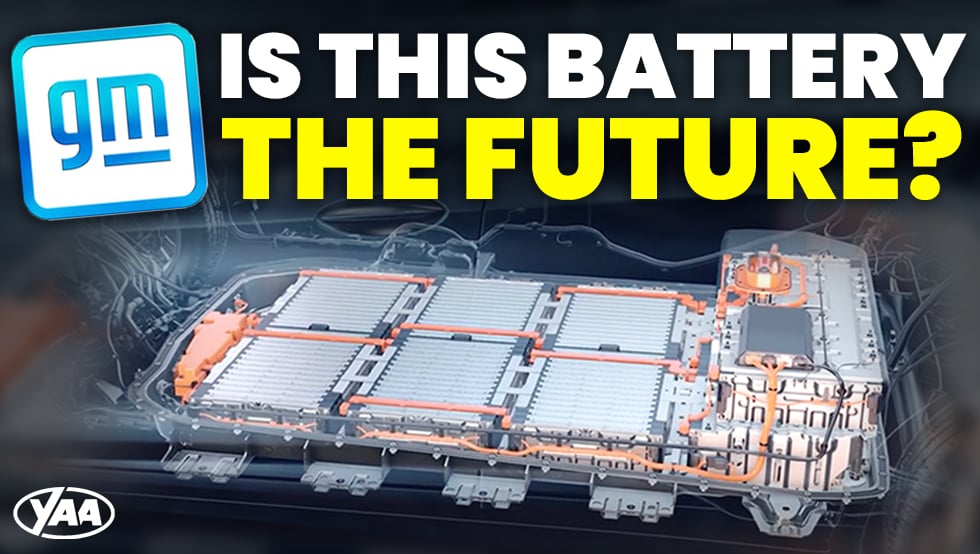
My very own Hyundai IONIQ 5 has a special trick up its sleeve. In fact, even Tesla can’t claim it. In 2022, very few electric cars are engineered with 800-volt architecture. While still an outlier, all signs point towards an auto industry heading in the direction of faster charging, better efficiency, and smaller battery sizes – all of which are unlocked by promising 800-volt electrical systems in EVs.
The mass adoption of electric vehicles largely depends on the ability to find real solutions for a few ownership challenges for today’s EV drivers:
Most electric vehicles in 2022 are built on 400-volt systems, but these systems have limits. Indeed, some automakers are quite happy with their 400-volt EV platforms. Tesla manages to find other ways of mastering efficiency and power delivery, and has not mentioned plans for a voltage upgrade. One BMW senior engineer called settling with a 400-volt platform the “best compromise”, but not everyone agrees.
800-volt systems can deliver double the power through the same current, or if desired, the same power through half the current. The result is roughly 50% faster charging for the same battery size. As a result, batteries can be made smaller and overall weight is reduced, increasing efficiency and ideally lowering the cost of the vehicle.
Would a car need a massive battery with a 500-mile range if it can charge a smaller battery that’s good for 250 miles in just 15 minutes? What is that smaller battery was A LOT cheaper?
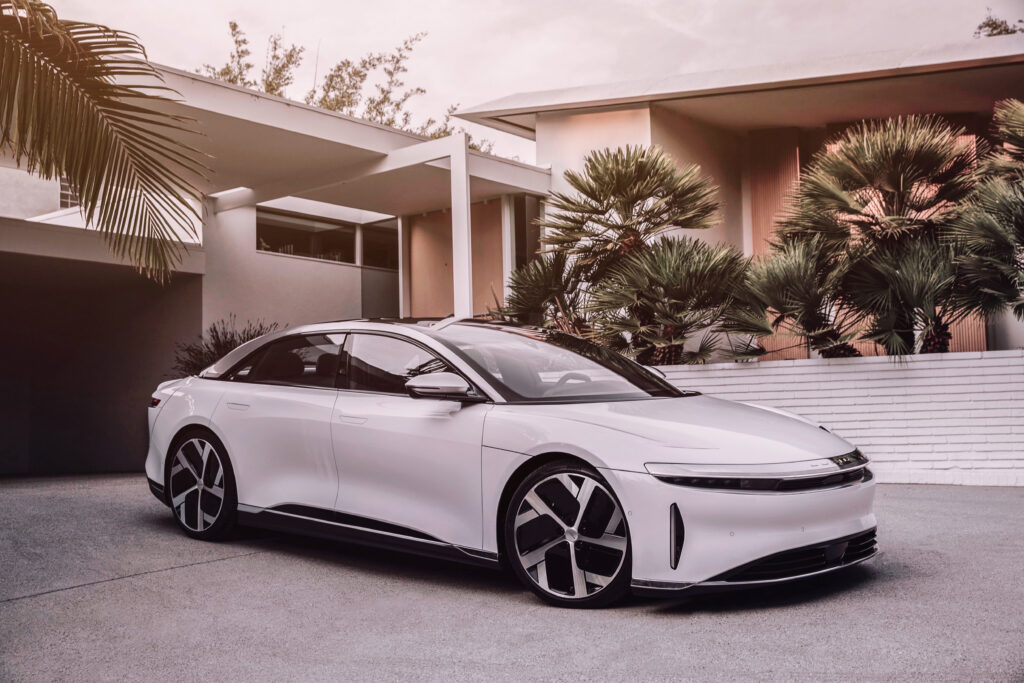
In 2022, just a few electric vehicles use 800-volt systems for power delivery and charging.
Of particular interest is the different paths taken by Ford and GM for their upcoming electric trucks. The F-150 Lightning is built on 400-volt architecture, while the Chevrolet Silverado EV is jumping to 800-volt architecture, and the result is much faster charging speeds for the Chevy. Will this matter to consumers, or will brand loyalty win out?
Why doesn’t Tesla use 800-volt charging? We’re not sure, but clearly they’ve found success with their existing 400-volt architecture.

Fortunately, a whole host of solutions are uniting to offer a better way forward for EVs. And it’s not all about charging speeds. Solid-state batteries are finally approaching real-world usability following decades of research and development. For the better part of the last decade, $100 per kilowatt-hour was the affordability target for battery development. That goal was reached, but the latest raw material shortages are sending prices back up, and electric car prices have gone up accordingly. The U.S. Department of Energy thinks that $60 per kilowatt-hour is within reach, however it’s increasingly looking like solid-state batteries may offer the only path to such low-cost batteries.
Toyota says it will be the first to bring a solid-state battery into a production vehicle. In typical Toyota fashion, their solid-state battery will debut in a hybrid powertrain rather than a full battery-electric vehicle. It looks like the world will see what solid-state battery chemistry is capable of in 2025.
Faster charging, better range, and (hopefully) lower prices are promised time and time again with every new EV model announcement. 800-volt architecture and solid-state batteries are the headlining developments that automakers are working on behind the scenes. We didn’t even touch on new battery chemistries, manufacturing methods, and electric motor breakthroughs in the works. We’ll have to save that for another day, as there’s always something new to talk about in the EV space.
But the promise of faster charging and energy-dense batteries begs the question: would you take faster charging over more range? It’s looking like that will be the EV debate of the decade. What are your thoughts? Let us know in a comment or over at the CarEdge Community Forum. What matters most when you head out on a journey?
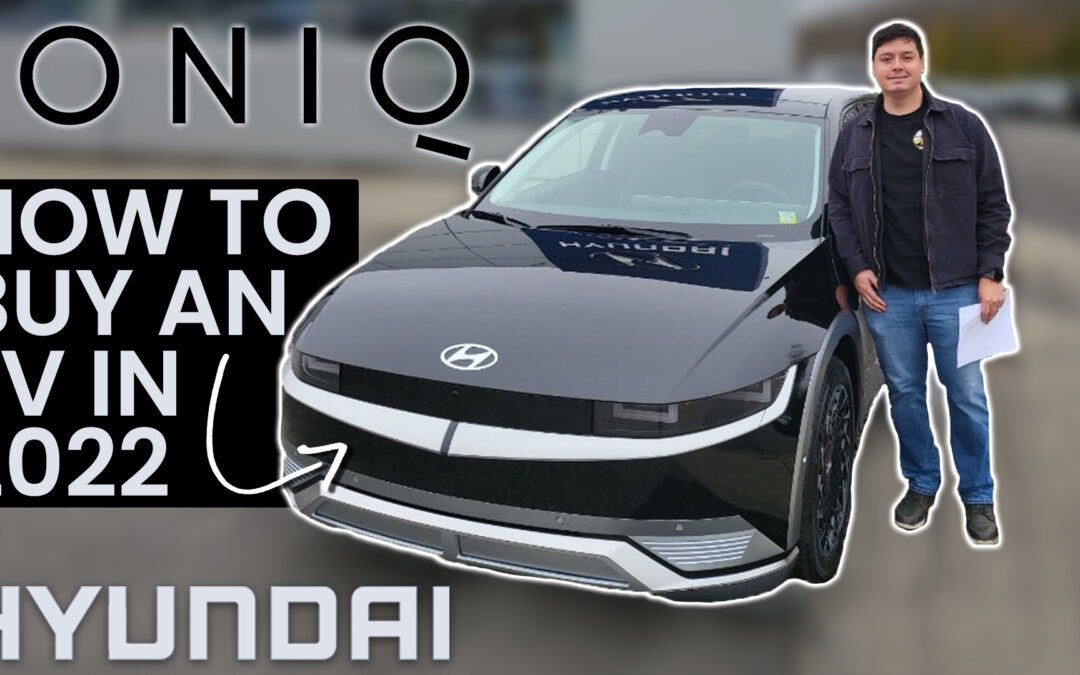
Buying an EV today is no walk in the park, but a good deal can be had with patience, research and flexibility. And having just gone through this process myself, I can confirm it was totally worth the work. These are my secrets to success, and how you can adapt these buying strategies to your unique situation in 2023.
Plus, be sure to check out the free template below to help you find the best deal on an EV in today’s competitive market.
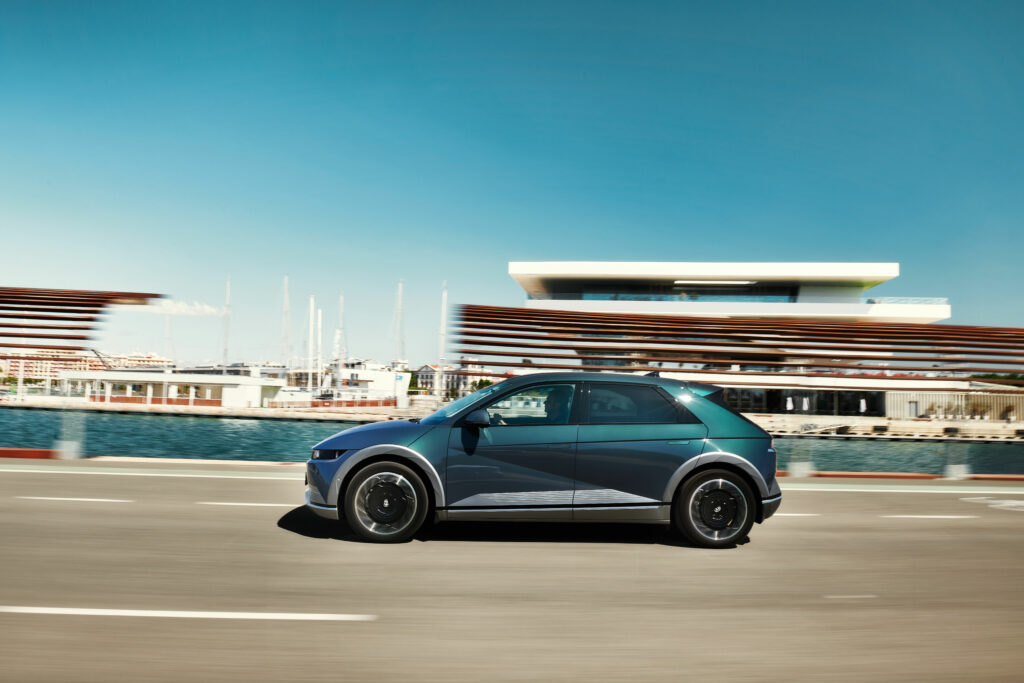
In 2023, it will save you a lot of strife to figure this out from the get-go. Which electric car models are you serious about? Are you solely considering Tesla with their direct-to-consumer, non-negotiable prices, or are you heading out to dealerships to find the best deal? Have you test driven your favorite EVs or even rented them on a service like Turo?
Once you have your short list of electric cars, trucks or SUVs that made the cut, it’s time to talk trim options, powertrains, and colors.
Do you prefer better range, or traction and acceleration? For some, all-wheel drive versus rear-wheel drive is front of mind. My driveway in snowy West Virginia is as steep as it gets, so I knew that AWD was a must for me. There’s always a tradeoff though. RWD electric cars get better range, sometimes 20% more. However, they’re not as fast for the speed freaks out there. Do you care more about going the extra mile on the highway, or zipping around town with the best 0-60 time?
And then there’s charging time. Before you settle on an EV model, have a plan for how you’ll charge it. If you live near a major metro area or along a major interstate, don’t fret. Fast chargers are already available near you. However, charging at home is MUCH more affordable.
Would you be okay with adding a few miles of driving range per hour (30 miles overnight) by simply plugging in to a normal 110 Volt wall outlet? Or would you rather spend $1000 on the installation of a faster charger for your home? The answer to that question may depend on what the rated range and charging speeds of your car are.
It’s often easier to find a base trim at MSRP. I just experienced the hassle of finding a fully-loaded IONIQ 5 Limited in America. There aren’t many out there. Depending on the EV you’re in the market for, finding the trim you want may or may not be a challenge. For Tesla, it’s a non-issue. I’ve found that the only way to avoid regretting your trim selection is to experience each trim firsthand.
Remember: The average price for an EV remains 20% higher than the overall market in 2023. Buying an EV under MSRP is possible, as proven by our own CarEdge Car Coaches. However, if a higher trim makes it more likely that you’ll keep the vehicle long-term, it might be worth it to shell out a few thousand more dollars to get the upgrade. I’m glad I did.
The real value (and fuel/maintenance savings) of an EV will only be had if you keep it long-term (or if it ends up keeping good residual value down the road).
How long are you willing to wait? How far are you willing to go over MSRP? What will you do if the dealer tries to force add-ons? Would you be patient to save thousands of dollars? These are all questions you should be asking yourself early on.
As ridiculous as it is, I took a one-way flight 600 miles to New York to pick up my lovely new car at MSRP. Sure, I could have bought a base trim with a $3000 markup a few hours away, but my plane ticket was only $250. What are you willing to do for the perfect car at the perfect price (by 2022 standards)? How far would you go? Would you rather travel to pick up the electric car, or pay $1,000 – $2,000 for delivery?
How much are you willing to pay? Strictly the manufacturer-suggested retail price (MSRP), or a tad more? What will be your plan of action if the perfect car is local for $2,000 or $3,000 over, but the same car is at MSRP five hours away? Remember, EVs ARE negotiable in 2023.
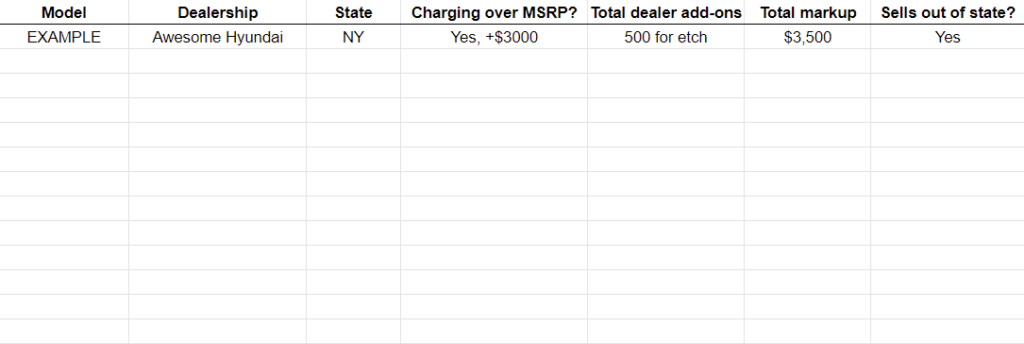
I’m a spreadsheet guy. Google Sheets and Microsoft Excel are my best friends. Perhaps you prefer lists on a notepad or on your phone. Whatever the case, get organized. If you don’t, you may end up calling the same dealership twice, or even worse, losing track of where the best deals are.
Here are some important things to keep track of:
Here’s an example template that you can copy and make your own.
I can not emphasize the importance of staying organized throughout your car search, especially if you don’t want to spend more time than absolutely necessary on this.
Now it’s time to contact dealers and fill up that spreadsheet. Fingers crossed! Do you prefer phone calls, or messaging the internet sales team? I was impatient, so I called each dealer, and if it sounded like they might be one to work with, I then began the email process. It’s VERY wise to document all communications (especially about pricing) in emails or at least text messages.
Don’t make it any harder than it has to be. Start with a search radius you’re comfortable with, and work outward from there. In fact, start with CarEdge Car Search to find the inventory leads, and don’t forget to check out CarEdge Car Dealer Reviews, where dozens of electric car buyers have already shared their dealership experiences. Don’t forget to add yours!
When you find what you want (hopefully with no dealer markup and no or negotiable add-ons, find out if you can place a deposit. Some dealerships don’t accept deposits, which means you’d have to show up on the day the car arrives. Even then, nothing is a guarantee. Do a risk/reward analysis.
Does the price and spec of the car justify what it would take to get the car?
When you find the deal you’d like to move forward with, get EVERYTHING in writing.
Specifically, these bits of info should be documented at the very least:
Make sure you’re aware of the possible arrival date if awaiting a shipment. Be flexible. My delivery date was actually moved up, but others have had to wait a few extra weeks.

Even in today’s hectic, supply-constrained auto market, I’m confident that electric car buyers can find a great deal by following this game plan. Clearly, documenting everything is my thesis. Let us know if you have any questions, thoughts or suggestions. We’d especially love to know how your electric car buying experience turns out!
Be sure to leave a dealer review to help others find pro-consumer dealerships!
Plus, check out our new CarEdge Electric live show every Monday, Wednesday and Friday. We’re excited for what’s to come, and we’re thrilled to have you along for the ride.